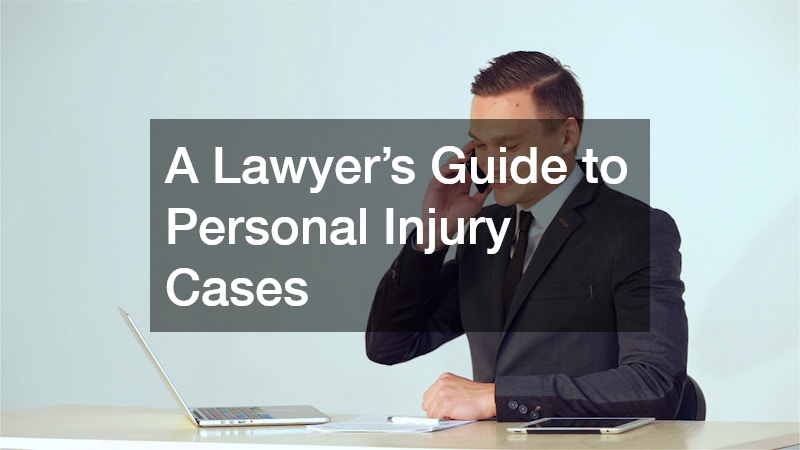Personal injury cases can be complex and daunting, both for clients and personal injury lawyers. This guide aims to shed light on the intricacies of personal injury law, offering insights into the process, common challenges, and effective strategies for achieving successful outcomes.
What is a Personal Injury Case?
Definition and Scope
Personal injury cases involve a range of scenarios where an individual suffers harm due to someone else’s negligence or intentional actions. Typical cases include car accidents, medical malpractice, and slip-and-fall incidents, each presenting unique challenges and legal requirements.
These cases require a nuanced understanding of various factors, including the circumstances leading to the injury and the parties involved. Lawyers must navigate these complexities to establish the scope of the case and the potential legal remedies available to their clients.
Understanding the broad scope of personal injury law is crucial for attorneys aiming to effectively advocate for their clients. Each case’s unique circumstances require a tailored approach to ensure justice is served.
Legal Principles Involved
Personal injury law is rooted in foundational legal principles such as negligence, liability, and damages. These principles determine the legal obligations of the parties involved and the standards of conduct expected in various situations.
Negligence is a critical component that must be proven for successful claims, often requiring demonstration that the defendant failed to act as a reasonable person would under similar circumstances. Liability and damages further clarify the extent of the defendant’s responsibility and the appropriate compensation for the plaintiff.
Attorneys must effectively demonstrate these legal foundations to build a strong case, which often involves a deep dive into the specifics of tort law. A comprehensive understanding of these principles is essential for advocating on behalf of injured parties.
How to Prove Negligence in Personal Injury Cases?
The Four Elements of Negligence
Proving negligence in a personal injury case involves establishing four key elements: duty, breach, causation, and damages. Duty refers to the obligation one party owes to another, based on the nature of their relationship or circumstances.
A breach occurs when a party fails to act according to the duty owed, resulting in harm to another individual. Causation links the breach of duty directly to the injuries sustained, while damages quantify the harm suffered.
Successfully proving these elements is essential for the plaintiff to secure compensation. Each element must be supported by compelling evidence to demonstrate the full impact of the defendant’s actions.
Gathering Evidence
Evidence gathering is crucial for establishing negligence and involves meticulous documentation of all relevant information. Photographs, medical records, eyewitness testimonies, and expert opinions are vital in constructing a robust case.
Strategically presenting evidence helps illustrate the defendant’s fault and the plaintiff’s suffering. A well-organized presentation increases the likelihood of a favorable outcome, ensuring accountability for negligent actions.
Effective evidence collection requires a thorough understanding of legal procedures and the ability to anticipate potential defenses. Thorough documentation reinforces the plaintiff’s position, paving the way for successful negotiation or trial outcomes.
What Types of Compensation Can be Claimed?
Economic vs. Non-Economic Damages
In personal injury cases, damages are often classified into economic and non-economic categories. Economic damages include tangible financial losses such as medical expenses, lost wages, and property damage.
Non-economic damages encompass more subjective aspects like pain and suffering, emotional distress, and loss of enjoyment of life. These damages require careful evaluation to ensure fair compensation for the plaintiff’s full range of harm.
Balancing these damages allows attorneys to create a comprehensive claim that addresses both immediate and long-term effects of the injury. An adept assessment ensures that clients receive adequate compensation reflecting their true losses.
Calculating Future Damages
Calculating future damages involves predicting the impact of an injury on the plaintiff’s life in terms of medical needs and earning capacity. This assessment requires expert testimony and a detailed analysis of the injury’s long-term implications.
Economists, vocational experts, and medical professionals often collaborate to provide a comprehensive picture of future financial needs. Their insights equip attorneys with solid bases for negotiating settlements or arguing for compensation in court.
Anticipating future challenges ensures that clients are financially protected, even if their condition worsens or persists. Careful calculation of these damages is crucial in fulfilling the client’s needs and safeguarding their future well-being.
What is the Process for Settling Personal Injury Claims?
Negotiating Settlements
Settlement negotiations are a pivotal stage in personal injury cases, often involving discussions with insurance companies. Effective negotiation tactics and a nuanced understanding of settlement dynamics are crucial for securing favorable terms.
Timeframes for negotiations are influenced by the complexity of the case and the insurer’s willingness to settle. Common hurdles can include disputing liability or valuation of damages, requiring strategic maneuvering to overcome.
Mastering negotiation techniques helps attorneys advocate effectively for their clients, ensuring that settlements are equitable and reflective of the injuries sustained. A successful settlement can provide timely resolution, avoiding the uncertainties of a trial.
Mediation and Arbitration
Mediation and arbitration offer alternative dispute resolution methods that can prevent lengthy court battles. Mediation involves a neutral third party facilitating dialogue between disputing parties to reach a mutually agreeable solution.
Arbitration, on the other hand, involves an arbitrator who hears both sides and then renders a binding decision. Both methods aim to streamline processes and reduce the emotional and financial strain of litigation.
Such alternatives provide flexibility and control over the outcome, often resulting in expedient and satisfactory resolutions. Attorneys well-versed in these methods guide clients through the complexities of alternative dispute resolution.
Successfully navigating a personal injury case requires a deep understanding of legal principles, strategic negotiation skills, and the ability to gather and present compelling evidence. Whether a case is settled out of court or goes to trial, being well-informed empowers lawyers to better serve their clients and achieve the most favorable outcomes.




